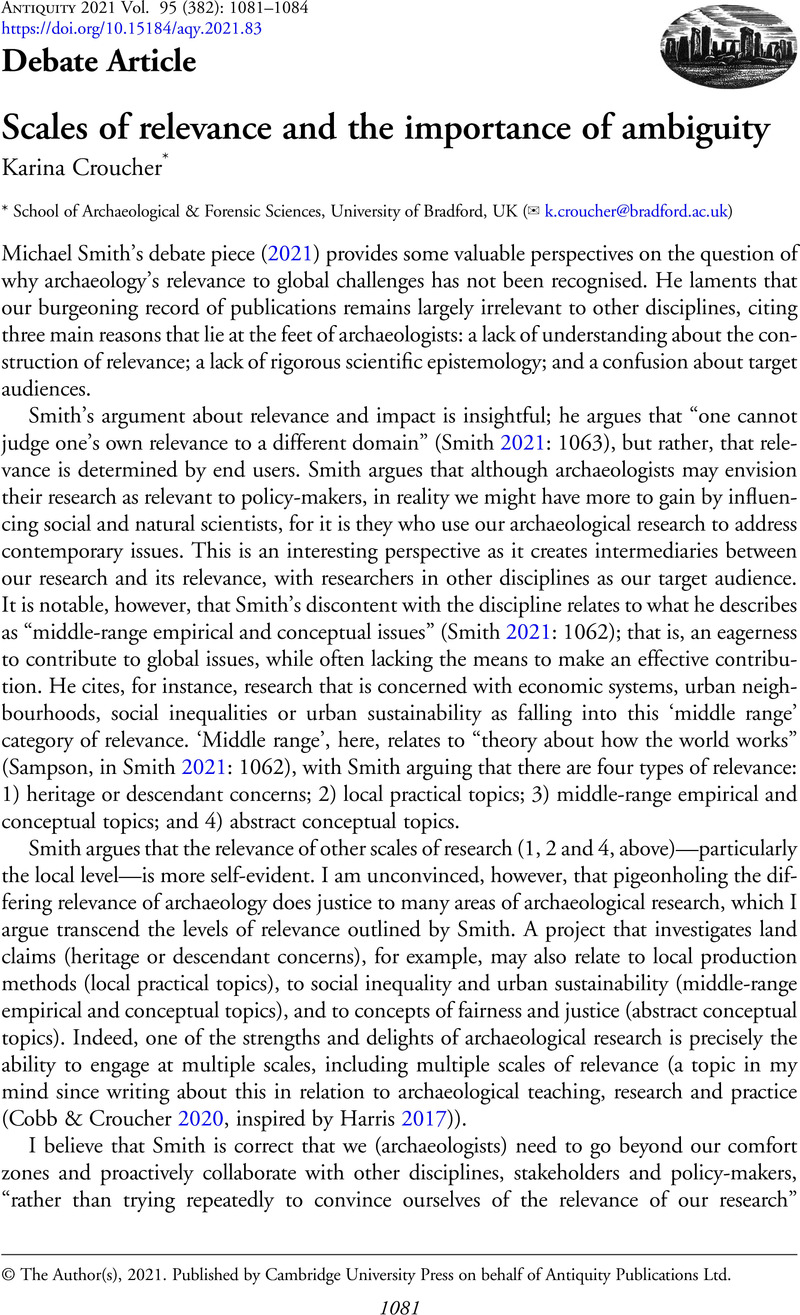Crossref Citations
This article has been cited by the following publications. This list is generated based on data provided by Crossref.
Smith, Michael E.
2021.
Archaeology, relevance and science.
Antiquity,
Vol. 95,
Issue. 382,
p.
1085.
Our systems are now restored following recent technical disruption, and we’re working hard to catch up on publishing. We apologise for the inconvenience caused. Find out more: https://www.cambridge.org/universitypress/about-us/news-and-blogs/cambridge-university-press-publishing-update-following-technical-disruption
Published online by Cambridge University Press: 12 July 2021
